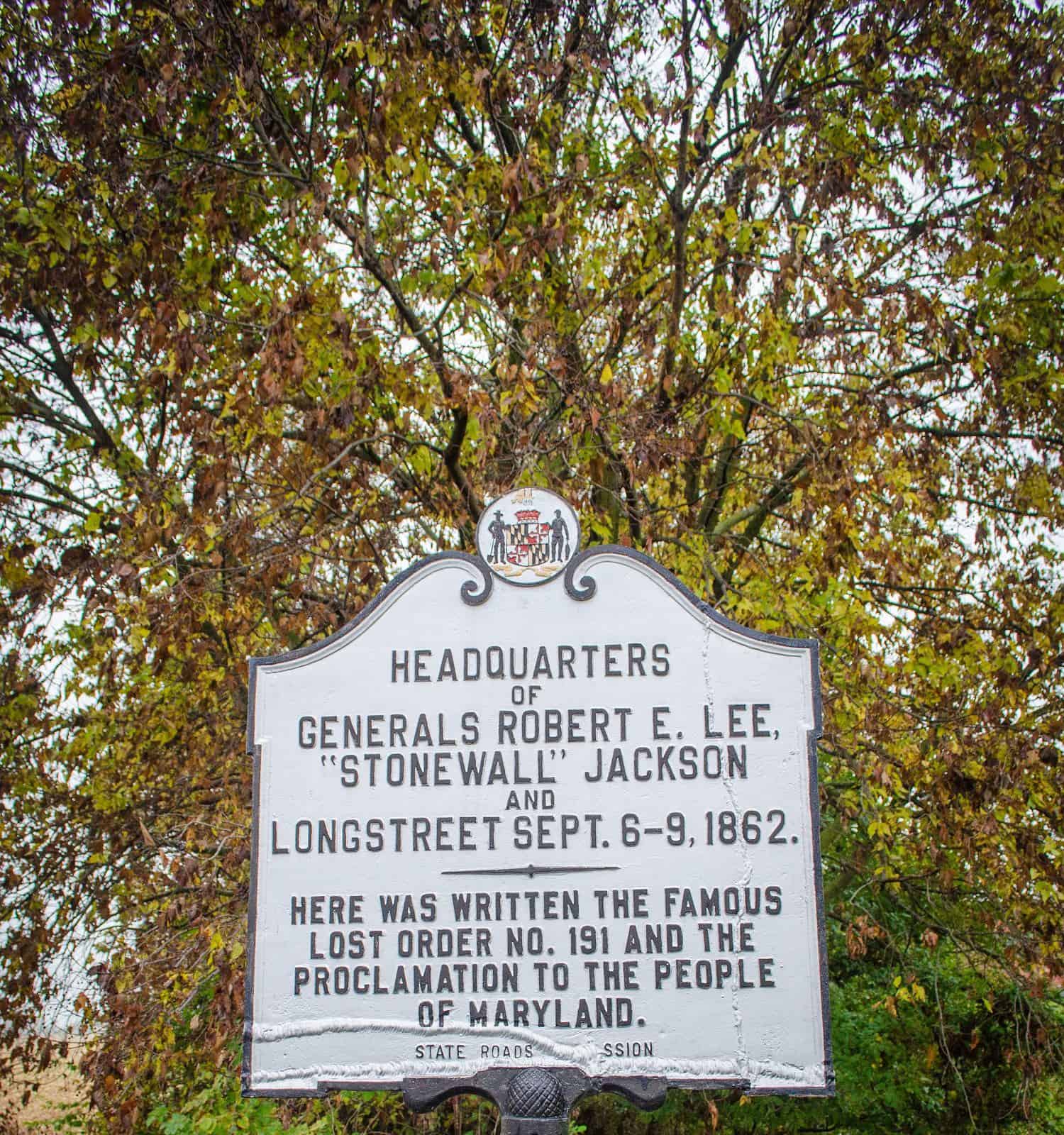America has a rich history, filled with victories, inventions, celebrations, and cultural diversity. However, it has also experienced its fair share of turbulence, upheaval, and wars. Each war served to redefine the country, ultimately shaping the nation we have today. And since several got fought here, tangible memories remain where we can honor the fallen and remember the past. Maryland is one of the states that is home to several important battlefields. We gathered a list of seven of the most historical battlefields in Maryland to help you learn a little more about the nation’s history.
1. Antietam National Battlefield — Civil War

Antietam National Battlefield is one of the most important and brutal battles in the entire Civil War.
©Adam Parent/Shutterstock.com
Civil War history buffs flock to the Antietam National Battlefield annually. This historic site is in Sharpsburg, Maryland, and is the spot where one of the bloodiest battles occurred. On September 17, 1862, a fierce twelve-hour engagement happened between the North and the South. By the end of the day, 23,000 soldiers were missing, wounded, or killed.
Many people will be familiar with some of the key people at Antietam that fateful day. Robert E. Lee and George B. McClellan commanded their respective armies. Between them, they lost six generals during the fighting. However, one of the heroes whose name may sound familiar was Clara Barton. Under heavy fire, she arrived at the battlefield with a wagon of medical supplies. She then tended to wounded soldiers alongside the army surgeons.
Today, visitors can honor Clara Barton and the thousands of lives lost during the fateful battle. Antietam National Battlefield is preserved and managed by the National Park Service. It is open year-round. The rangers and volunteers welcome the opportunity to share more about this unforgettable battle.
2. Bladensburg — War of 1812
On August 24, 1814, American forces suffered a tremendous blow, one that would leave an indelible mark on history. The War of 1812 had raged for two years with no sign of ending. However, that fateful day in August changed things.
General Robert Ross led 4,500 men through Maryland after landing in Benedict. Their goal was the U.S. capital, and a contingent of American forces stood in their way. General William Winder led 6,500 militiamen with little experience. When the two clashed, the British rapidly overwhelmed the Americans. The fleeing militiamen left an open road, which the British took advantage of. Once they reached Washington, D.C., the British troops set multiple buildings on fire, including the original White House.
3. Caulk’s Field — War of 1812
After the attack on Washington, D.C., another critical battle took place. The battle of Caulk’s Field isn’t often discussed during history lessons. But that doesn’t make it less impactful.
In the middle of the night on August 30, 1814, Captain Sir Peter Parker brought 140 men onto shore near Tolchester. After working their way inland for a while, they encountered a handful of Americans scouting for the 21st Regiment of Maryland Militia. The American officer in charge was Lieutenant Colonel Philip Reed. He laid a trap for the unsuspecting British troops, who experienced heavy casualties.
By luck or good fortune, the British troops decided to retreat just as the Americans ran out of ammunition. While the battle only lasted about an hour, there were significant losses. So, the field stands as a memorial to the lives lost to this day. An annual ceremony serves as a remembrance.
4. Fort McHenry — War of 1812

Fort McHenry played an important role for Americans during the War of 1812.
©Christopher Mazmanian/Shutterstock.com
Even those only slightly familiar with the War of 1812 have likely heard of Fort McHenry. After all, it is where the National Anthem of the United States originated. This particular fort, built in 1800, protected the vital port of Baltimore. On September 13, 1814, it was the target of a severe British naval bombardment.
One thousand Americans under the leadership of Major George Armistead stood strong in the face of mounting odds. The British used five vessels to begin a bombardment of the fort. They used a combination of mortars and brand-new Congreve rockets. After 27 hours of constant attacks, the British navy made no headway against the fort and its occupants. Eventually, they decided to cease the attack and sailed away to a new target.
5. Kedges Straits — Revolutionary War

American troops tried to protect communities on the Chesapeake Bay coastline during the Battle of Barges.
©Wirestock Creators/Shutterstock.com
While Maryland escaped the Revolutionary War relatively unscathed by local fighting, their regulars still engaged in several critical battles. One of the lesser-known events during this period is known as Kedges Straits (the Battle of Barges). It got this name because the fighting happened on a watery battlefield rather than on land.
In 1782, residents living on the banks suffered countless raids at the hands of the British. Commodore John Kidd spearheaded the attacks with six barges. Eventually, Virginia and Maryland decided to do something about it. The states organized a defensive flotilla.
On November 30, 1782, the flotilla received information that the British were holding out at Kedges Straits. They launched an attack in an attempt to do enough damage that the British could no longer raid locals. Unfortunately, the battle didn’t last long and was a decisive British victory. That left them free to continue plundering the coastline of the Chesapeake Bay.
6. Monocacy National Battlefield — Civil War

Monocacy National Battlefield still stands to pay honor to those who died.
©Zack Frank/Shutterstock.com
The Civil War resulted in numerous battles that cost thousands of American lives. One happened at Monocacy Junction next to the Monocacy River in Maryland. Once Confederate troops worked their way through the Shenandoah Valley, General Jubal Early led his troops into Maryland. Their ultimate goal was to push through to Washington, D.C.
When Union generals realized what was happening, they sent troops out to the Monocacy Junction to try and halt the British advance. Major General Lew Wallace commanded over 6,000 troops. The Confederates had 15,000 troops.
On the morning of July 9, 1864, the Confederates attacked. By evening, over 2,000 men were missing, captured, killed, or wounded. Union soldiers retreated, leaving the Confederate army victorious. However, that delay bought enough time for reinforcements to arrive at the nation’s capital.
7. South Mountain State Battlefield — Civil War

Cannons still dot some of the Civil War battlefields so visitors can get a feeling for what the war was like.
©Grant Wylie/ via Getty Images
The Battle of South Mountain occurred only days before Antietam. On September 4, 1862, General Robert E. Lee led his troops into Maryland. He felt emboldened after the victory at Second Manassas and pushed into Maryland, where he divided his troops.
The Union general, Major General George B. McClellan, received a copy of General Lee’s plans and decided to attack the divided Confederate troops. On the morning of September 14, a small contingent of Confederate soldiers protecting Turner’s and Fox’s Gaps at South Mountain came under attack.
The roughly 18,000 Confederate troops at South Mountain were no match for McClellan’s northern force. The battle raged all day. By nightfall, Lee ordered his men to retreat. All told, there were approximately 5,000 missing, captured, wounded, or killed soldiers from both sides.
After Lee retreated, his men rejoined Lieutenant General Thomas “Stonewall” Jackson’s troops at Harper’s Ferry. Once the Confederate army secured a victory there, they marched on to Antietam. Soon after the Union victories at South Mountain and Antietam, President Lincoln issued the Emancipation Proclamation. So, these fierce battles served as a vital turning point in the war.
Summary of the 7 Most Historic Battlefields in Maryland
| Number | Battlefield | War |
|---|---|---|
| 1 | Antietam National Battlefield | Civil War |
| 2 | Bladensburg | War of 1812 |
| 3 | Caulk’s Field | War of 1812 |
| 4 | Fort McHenry | War of 1812 |
| 5 | Kedges Straits | Revolutionary War |
| 6 | Monocacy National Battlefield | Civil War |
| 7 | South Mountain State Battlefield | Civil War |
The photo featured at the top of this post is © George Sheldon/Shutterstock.com
Thank you for reading! Have some feedback for us? Contact the AZ Animals editorial team.







